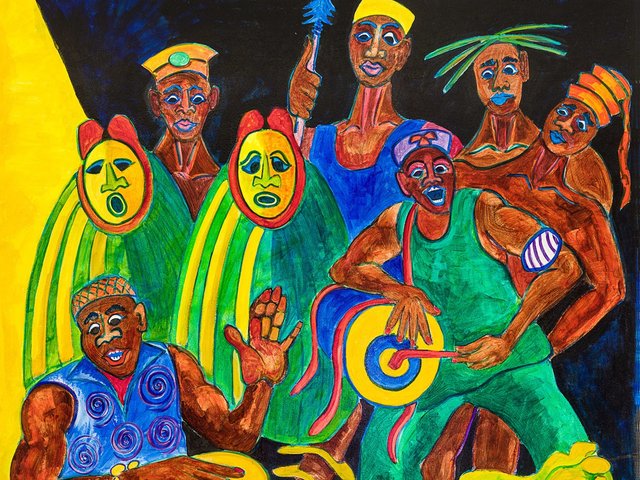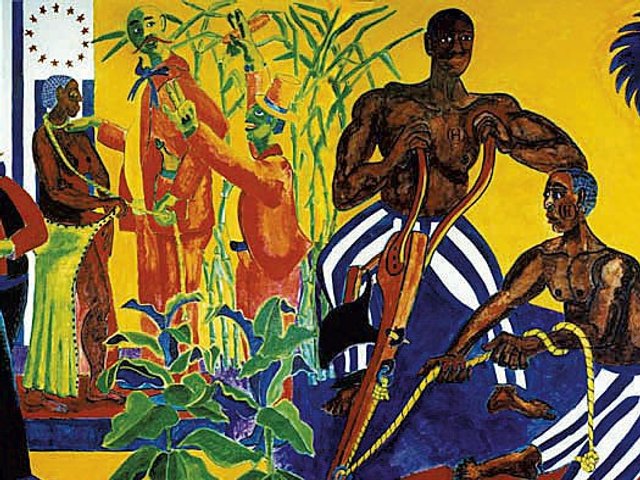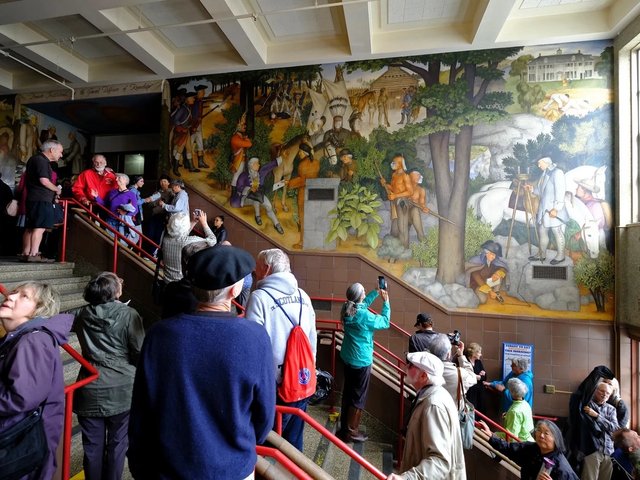The Vermont Law School’s (VLS) decision to permanently obscure a pair of controversial murals on its campus does not violate the artist’s rights as protected under the Visual Artists Rights Act of 1990 (VARA), a second-circuit court ruled on 18 August. The opinion affirms a previous judgement of a district court, rejecting the artist’s claim that the school’s desire to hide the murals was tantamount to destroying or modifying them.
The works, by the artist Samuel Kerson, have been a source of contention in the law school’s community for more than two decades. Together titled The Underground Railroad, Vermont and the Fugitive Slave, they were painted in 1993 and 19994 on the upper level of a space for school gatherings, comprising eight scenes that depict the United States’ history of enslavement and Vermont’s role in the abolitionist movement. However, since at least 2001, the school has received complaints from community members who say the images by Kerson (who is white) are racist. In 2013, the school's diversity committee considered removing them; the school added plaques the following year to explain the artist’s intention.
“Among the concerns, viewers perceived the murals as depicting enslaved African people ‘in a cartoonish, almost animalistic style’ with ‘large lips, startled eyes, big hips and muscles eerily similar to 'Sambos' or other racist … caricatures,’” court documents read. “Beyond these stereotypical representations, some also took issue with the murals’ depiction of ‘white colonisers as green, which disassociates the white bodies from the actual atrocities that occurred’.”
In the summer of 2020, amid a national reckoning about systemic racism and violence against Black people, VLS president Thomas McHenry received a petition endorsed by more than 100 students, alumni, faculty and staff, demanding that the school remove and replace the murals. After requesting that Kerson remove the murals himself, and finding that he was unable to do so without damaging them, the school decided to permanently conceal them from public view by erecting fabric-cushioned acoustic panels in front of the works.
In response, Kerson sued the school, claiming that this was a violation of his rights under VARA, the federal law that protects artworks from intentional distortion, mutilation or other modification and prevents any destruction of “a work of recognised stature”. A district court sided with Vermont Law School after an initial hearing in 2021, prompting Kerson to appeal the decision.
Writing in the latest ruling, US Circuit Chief Judge Debra Ann Livingston said that the walls erected around the murals by VLS “did not physically alter them whatsoever, let alone ruin them or render them unrepairable”.
The court’s decision could have major implications for how owners handle contentious artworks installed on their property—especially murals, which are typically designed as long-term or permanent fixtures. In recent years, debates have arisen over a mural in Georgetown, Texas, that includes the rainbow flag; one in a San Francisco high school depicting scenes from George Washington’s life; and a mural in a Detroit suburb celebrating police.
VARA “establishes a scheme of protection calibrated to mediate between artists’ rights to protect their artistic reputation and the integrity of their works and art owners’ rights to control the works in their possession”, Livingston wrote. “To this end, authors of qualifying works of visual art may invoke VARA to prevent the modification and destruction of their art, albeit with some exceptions.”
But in the case of Kerson’s works at VLS, she added, “hiding the murals behind a barrier neither modifies nor destroys them and, therefore, does not violate VARA”.





